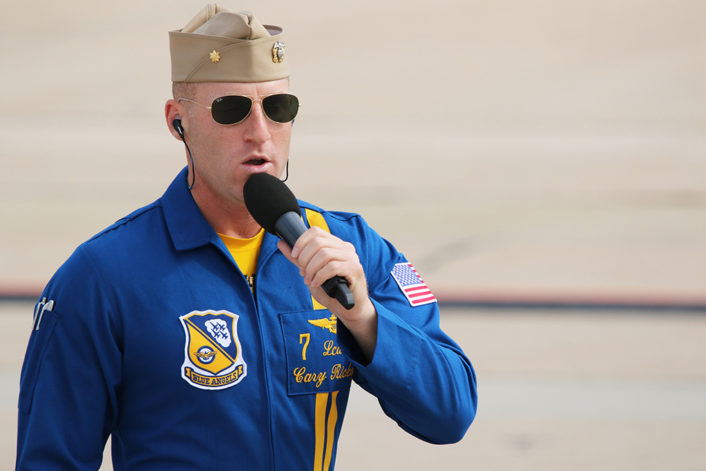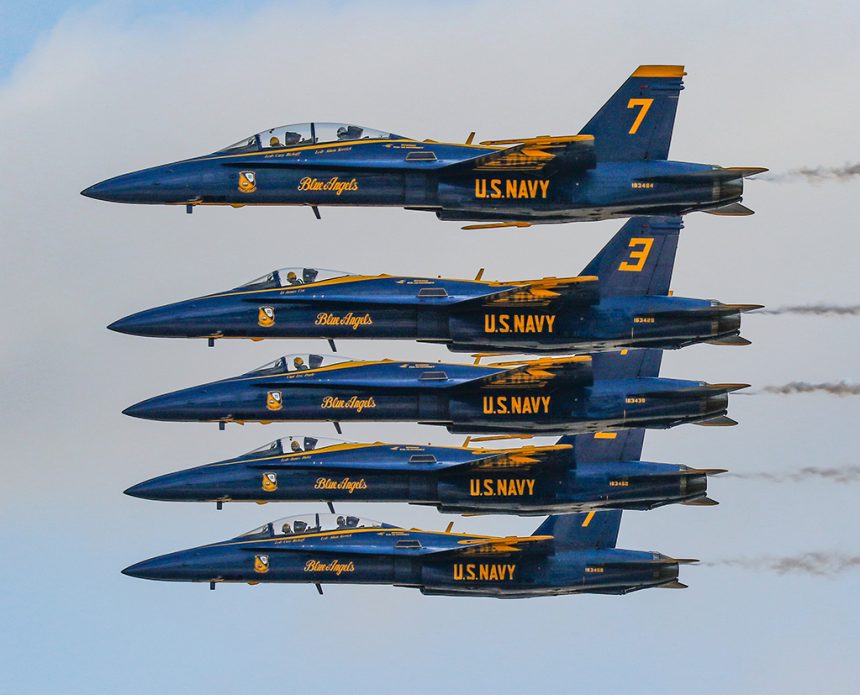Compared to Civilian Hiring and Marketing Costs, Blue Angels Are Actually a Bargain.
Journalist and author Christopher D. Cook was sharply critical of the U.S. Navy’s Fleet Week and Blue Angels performance in San Francisco last week suggesting that, “…the event guzzles phenomenal amounts of fossil fuels and taxpayer dollars.”
In an article published on CommonDreams.org on Monday, Oct. 14, 2019, author Christopher Cook, who has written for The Economist, The Christian Science Monitor and Mother Jones, argued that, “Celebrating militarism, polluting the air, terrifying residents, and raiding millions from the public treasury—these are real issues.”

In his analysis, Christopher Cook quoted the costs of operating the U.S. Navy Flight Demonstration Team, the Blue Angels; “According to numerous reports citing Navy budget figures, the Blue Angels shows—including training exercises and support—cost the taxpayers $35.5 million a year.”
Let’s accept Christopher Cook’s numbers at face value since he is a credible editorialist and the cost statistics he quotes are from an official source. If Cook’s cost statistics are accurate- and they appear to be, we can perform a basic statistical analysis of the value, or lack of value, of the Navy’s Blue Angels compared to published metrics for hiring and marketing in the private sector.
Journalist Christopher Cook proposes a valid question: are the Blue Angels a fiscal extravagance or are they a cost-effective marketing and recruiting tool for the U.S. Navy?
The answer is that, the Blue Angels are, in fact, a highly cost effective public relations and recruiting asset for the U.S. Navy.
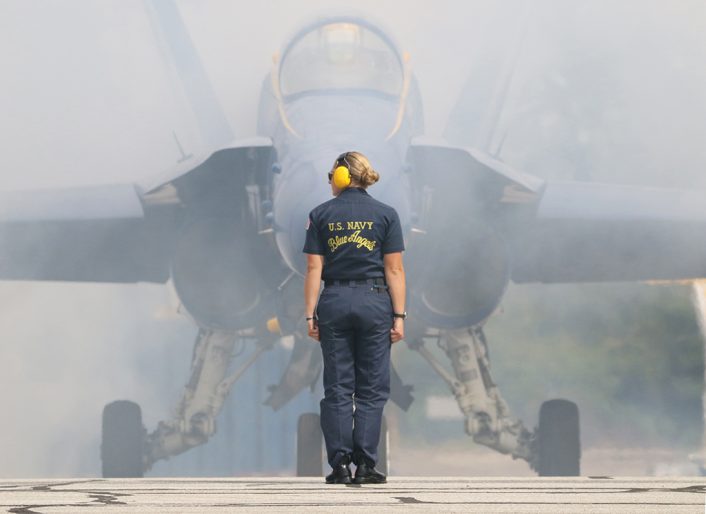
Published statistics for recruiting new employees are relatively easy to find in the private sector. One issue in performing a meaningful analysis is, the statistics vary significantly.
According to a study published by the Society for Human Resource Management on Aug. 3, 2016, “The average cost-per-hire for companies is $4,129.00”.
However, another study published by the National Association of Colleges and Employers cites that, “Hiring an employee in a company with 0-500 people costs an average of $7,645.00”.
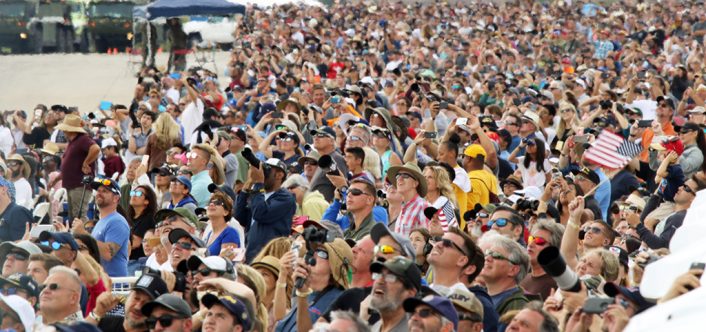
For the purposes of our analysis, let’s normalize the two extremes of the highest and lowest cost-per-hire estimates across the entire annual hiring volume of the U.S. Navy, and, in fairness to Christopher Cook’s claim that the Blue Angels are “…raiding millions from the public treasury”, let’s weight these costs to the low end of the civilian scale.
According to a May 16, 2019 report by Ben Werner in the United States Naval Institute News, USNI.org, “The Navy is on track grow by 7,500 active duty personnel this year…”
With our metric of 7,500 new “hires” for the U.S. Navy in 2019 and our normalized cost-per-hire of $5,008.00 by published industry standards, we find that a reasonable budgetary allocation for the U.S. Navy for new hires annually totals $37,560,000.00. Let’s compare this number with the annual budget for the U.S. Navy Blue Angels as quoted in Christopher Cook’s article at, “$35.5 million a year”. These numbers, while not precise or accurate by accepted accounting standards, do correlate closely enough to suggest that the cost of operating the Blue Angels exclusively as a recruiting asset are fiscally justifiable. They are not an extravagance or waste strictly from a recruiting perspective.
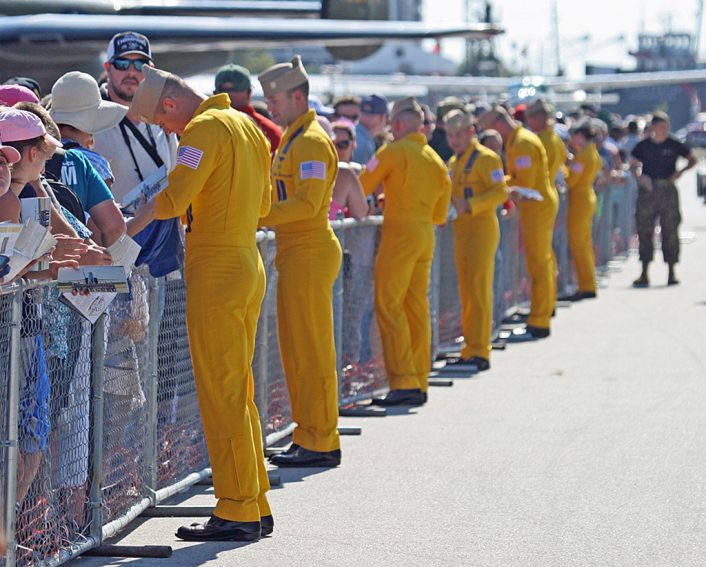
But the Blue Angels are more than a recruiting asset. And, there are other data points to this analysis, however colloquial, of the cost-effectiveness of the Blue Angels as a recruiting asset. For instance, the Navy also incurs the budgetary costs of maintaining a recruiting command- the Blue Angels aren’t the Navy’s exclusive recruiting budgetary line-item. That being true, the mission of the Blue Angels is not exclusively recruiting. The demonstration team performs other missions including visiting hospitals, senior care facilities, schools and veterans’ organizations. The value of these visits is less tangible from an analytic perspective, but their value is undeniable.
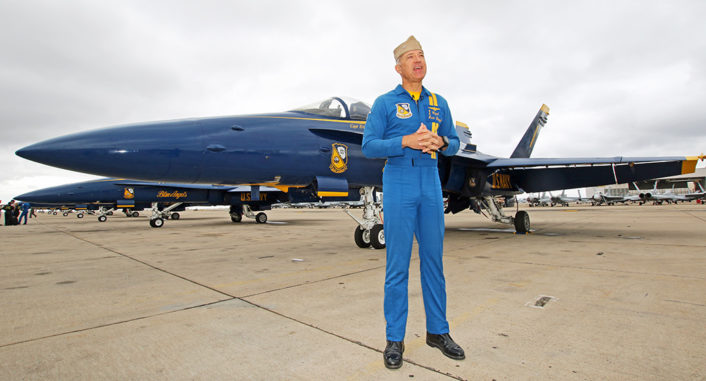
Additionally, both the U.S. Navy’s Blue Angels and the U.S. Air Force demonstration team, the Thunderbirds, actively promote the current U.S. educational initiative for the science, technology, engineering and math (STEM) curricula. According to a 2017 Pew Research Center study, “Internationally, the U.S. stands in the middle of the pack on science, math and reading scores”. While it is difficult to measure any effectiveness of the Blue Angels or the Air Force Thunderbirds on U.S. STEM scores, the need for improvement among U.S. schools is conspicuous. Here, any help is probably justifiable.
If you read the fine print of the U.S. Navy Blue Angel’s mission statement, it reads that the team’s mission is, “…to showcase the pride and professionalism of the United States Navy and Marine Corps by inspiring a culture of excellence and service to country through flight demonstrations and community outreach.” Their mission statement says specifically that they are to, “…inspire a culture of excellence and service to country…”. By any interpretation, that message extends beyond the reach of strictly military recruiting.
In fairness, it is difficult for even the most skilled marketing analyst to measure the effectiveness of the Blue Angels’ ability to do something as broad as “inspire excellence”.

The effectiveness of those initiatives being somewhat intangible, let’s look at the Blue Angels’ marketing value in terms of more traditional advertising metrics. The Blue Angels published that they performed live in front of “15 million” spectators in 2018. The team’s Facebook page has 1,461,081 “Likes” along with 520,000 followers on Instagram and 169,600 followers on the Blue Angels’ official Twitter page. The Blue Angels are pulling in, at a minimum, 17,150,681 impressions if each click/view/person visits or views a marketing asset, social media post or show only one time. Add to this the number of search results on Google for the keywords, “Blue Angels”, which is 489,000,000 unique results. Total impression metrics for the Blue Angels “brand” could be minimally stated as well over a half-billion impressions. But even this metric is fuzzy. Consider the Blue Angels’ flyover of the Superbowl. Current advertising metrics for the Superbowl place the value of this 13.46 second flyover alone at approximately $2,019,000 in network ad time.
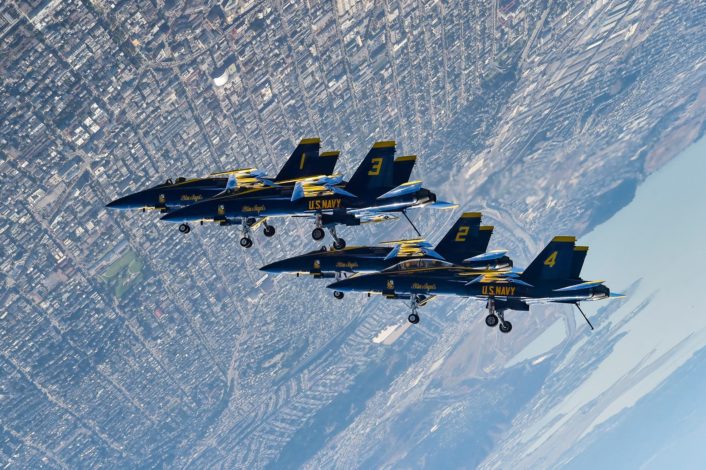
While our statistical analysis of the commercial value of the Navy’s Blue Angels provides at least an approximate calibration of the team’s marketing value, there is also the intangible value of the team’s symbolism, a value for which no metric exists. The Blue Angels means different things to different people. But in this analysis, perhaps CommonDreams.org editor’s statement about Christopher Cook’s article holds most true when he writes at the beginning of Cook’s article that:
“We have been unable to find a single story in any local news outlet that raises a single critical issue about the cost, safety, environmental impacts, problems for veterans with PTSD or kids who get frightened—or the overall military promotion—of this annual Navy airshow.”
And maybe, after even our cursory analysis of the Blue Angels’ fiscal performance, marketing effectiveness and overall popularity is done, the reason CommonDreams.org could find no issues with the Blue Angels’ performance in San Francisco is- because there are no real issues with the Blue Angels’ performances there.
